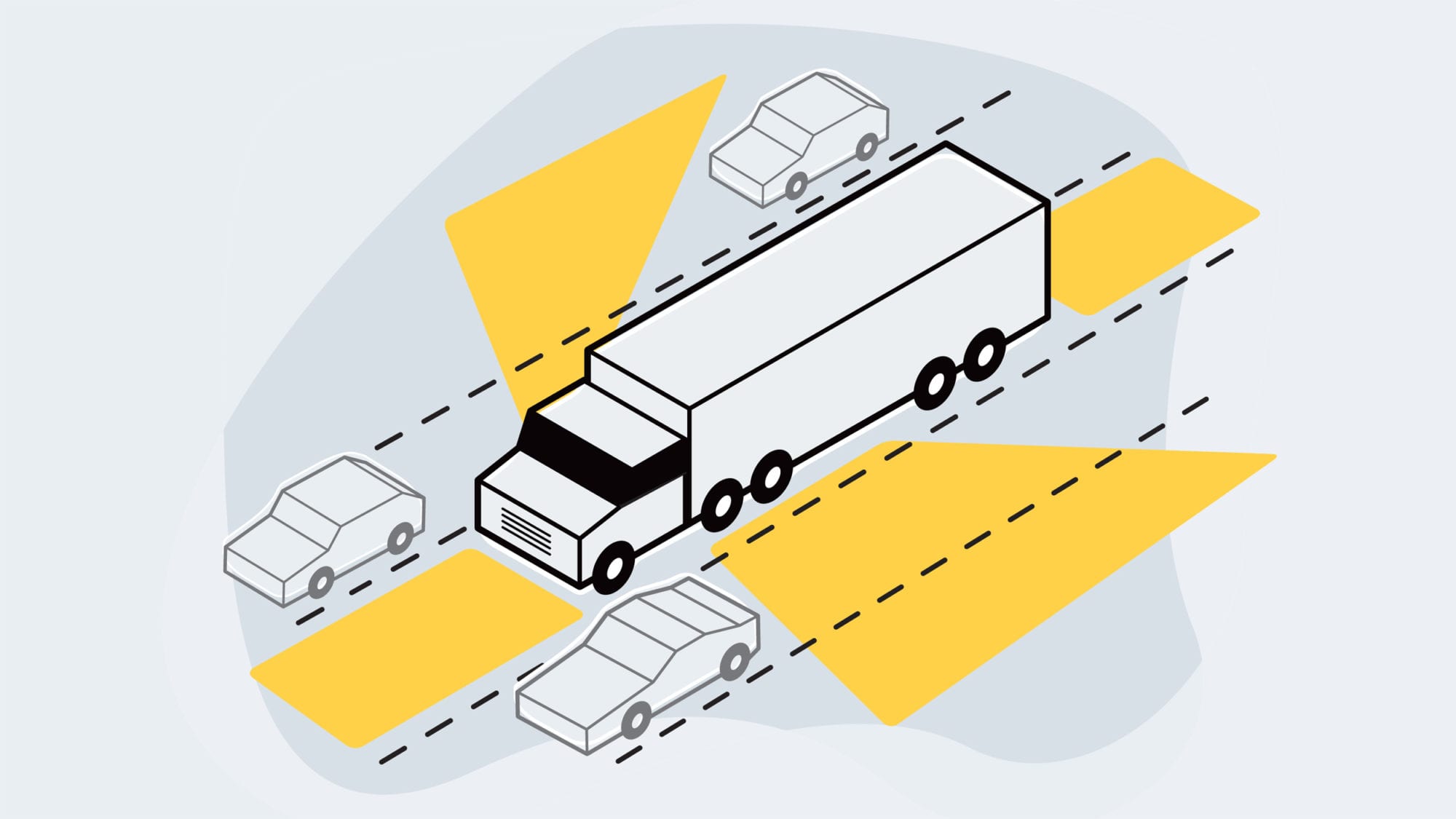Driving the highway this winter? Always remember: the larger the vehicle, the greater the challenge of driving near it. Commercial vehicles mean more slush spraying on your windshield, more snow blowing in the air and less visibility for everyone.
But with the right attitude and some healthy respect for big trucks and buses, you can stay safe on the road this season. “When you’re behind a large commercial vehicle, give yourself at least a four-second following distance,” says Ron Wilson of AMA Driver Education. You can estimate the correct distance by noting when the vehicle in front passes a certain point—like a lamp standard or road sign—and counting down the seconds until you reach that same point.
MORE TO READ
Why we need stricter standards for daytime running lights
“The bigger the vehicle, the larger its blind spots. Buses, semi-trailers and snowploughs have a lot more blind spots than a regular vehicle,” Wilson says. An 18-wheeler, for example, has four blind spots: extending forward about eight metres from its front bumper; back 60 metres from its rear bumper; from the driver’s door to the trailer’s mid-section on the left; and from the truck’s front to its rear on the right. “So give a truck lots of room, and if you decide to pass it, get past as quickly as possible. Remember that if you can’t see the driver in his side mirror, he probably can’t see you either.”
When approaching a large vehicle that’s driving toward you, keep a firm grip on the steering wheel. “At highway speed, they create air turbulence and they can throw up blowing snow,” Wilson says.
Be mindful at intersections too. “A bus or larger vehicle often goes right a little bit to turn left—or left a bit to turn right,” he says. “Your best bet: Don’t get in between them at turns, especially right turns. Drivers sometimes see space on that right side, but do not make the mistake of trying to get in there.”
If you’re on a multi-lane highway, it’s always safest to pass another vehicle on its left because the driver’s blind spot is larger on the right. There’s a reason driving instructors call the left side of any vehicle its “view side,” while the right side is known as the “blind side.”
MORE TO READ
Life in the fast lane: Alberta road safety risks
Likewise, when you’re on a multi-lane highway and a large vehicle is merging ahead, you should move over a lane to allow it to drive smoothly into your vacated space. If the lane alongside isn’t open, slow down or speed up to make sure there’s enough room for that merging truck or bus.
Always remember that larger vehicles take longer to accelerate and slow down or stop. As Wilson notes, a large truck may not always have the right of way, but you should always respect its “right of weight.”
WINTER WARM-UP
Refresh your driving skills with these AMA courses
• Every driver needs to adjust their skills for different situations and conditions, especially in winter. AMA’s experienced driver courses can help.
• Take a two-hour brush-up lesson. It can be customized to focus on highway instruction to help you get comfortable driving around large vehicles.
• Enhance your skills in snowy conditions with a winter driving lesson. Instruction covers braking, steering and accelerating. A one-hour online version is also available.
